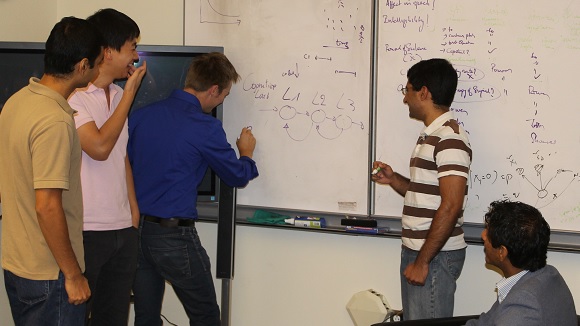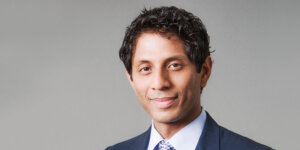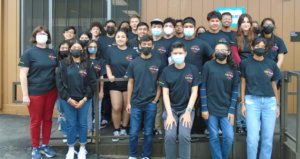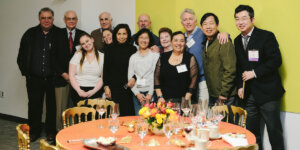
Members of the SAIL team sharing some humor as they work on the whiteboard.
For a fourth straight year and an unprecedented fifth time in the last six, the behavioral informatics team from USC’s Signal Analysis and Interpretation Laboratory (SAIL) has won the Computational Paralinguistics Challenge Award at this year’s INTERSPEECH, the world’s largest interdisciplinary conference focused on speech and language science and technology.
The USC group’s paper titled “Classification of Cognitive Load from Speech using an i-vector Framework” beat out over 30 submissions from teams representing educational institutions around the world in the 2014 INTERSPEECH Challenge.
“This is a record fifth such award for USC,” said Sandeep Gupta, chair of Electrical Engineering-Systems for the Ming Hsieh Department of Electrical Engineering at the Viterbi School. “We are incredibly proud of the accomplishments of our SAIL teams, and we look forward to continued success in INTERSPEECH competitions.”
Under the guidance of Shri Narayanan, Andrew J. Viterbi professor of engineering and director of both SAIL and the Ming Hsieh Institute, this year’s USC Viterbi team continued its work in behavioral signal processing and informatics, which analyzes the different signals humans give that reveal more about their state of mind or the way they interact. The team, led by postdoctoral scholar Maarten Van Segbroeck, built an algorithm that essentially studies the human voice equivalent of subtext to gain insights into how people think and how much information they can process.
Psychologists acknowledge that people learn more effectively when they can build on what they already understand, rather than being forced to learn something “cold.” However, the more a person attempts to learn in a shorter amount of time, the more difficult it becomes to process that information in working memory. The ability to decipher a wider range of hidden verbal cues would enable therapists or academics to more accurately evaluate patients or students, recognizing when they are reaching their cognitive limits.
The analysis of cognitive limits is the latest application of the SAIL team’s research, but the roots of this particular paper extend far beyond the spoken word and into facial expressions, body language and even physiological signals. Previously, the team has analyzed children’s vocal intonation and laughter, collecting data that can eventually be used to not only diagnose but also help inform the treatment of autism. Another application of SAIL’s work has unearthed largely hidden non-verbal cues exchanged by couples in relationship counseling, enabling therapists to address latent issues they might not have otherwise discovered. The SAIL team is also working on using engineering ideas for understanding mechanisms of psychotherapy to shed light on the best ways to collaborate with experts addressing a wide variety of mental health topics ranging from addiction treatment and depression to Autism Spectrum Disorder.
“While we are extremely proud of our paper winning the cognitive load competition, it’s only one example of our ongoing contribution to INTERSPEECH,” said Narayanan. “Just this year, we presented 18 papers, and over the course of our relationship with International Speech Communication Association, we’ve presented more than 100—far and away the most of any academic laboratory in the world.”
This year’s winning USC team, assembled by Narayanan and led by Van Segbroeck, includes USC Viterbi electrical engineering Ph.D. candidates Colin Vaz, Ruchir Travadi and Jangwon Kim along with Matthew Black of USC’s Information Sciences Institute and professor Alex Potamianos of National Technical University in Athens, Greece.

Members of the SAIL Team (L to R): Shri Narayanan, Matt Black, Maarten Van Segbroeck, Colin Vaz, Ruchir Travadi and Jangwon Kim
Narayanan established the Signal Analysis and Interpretation Laboratory in the Ming Hsieh Department of Electrical Engineering at USC Viterbi in November 2000. SAIL conducts research in human-centered information processing, currently focused on addressing the complex issue of mental health.
To its founder and director, though, the most important thing that goes on in his lab is collaboration.
“Complex problems require multiple perspectives,” Narayanan said. “This is truly an educational experience.”
Published on October 14th, 2014
Last updated on August 4th, 2021












